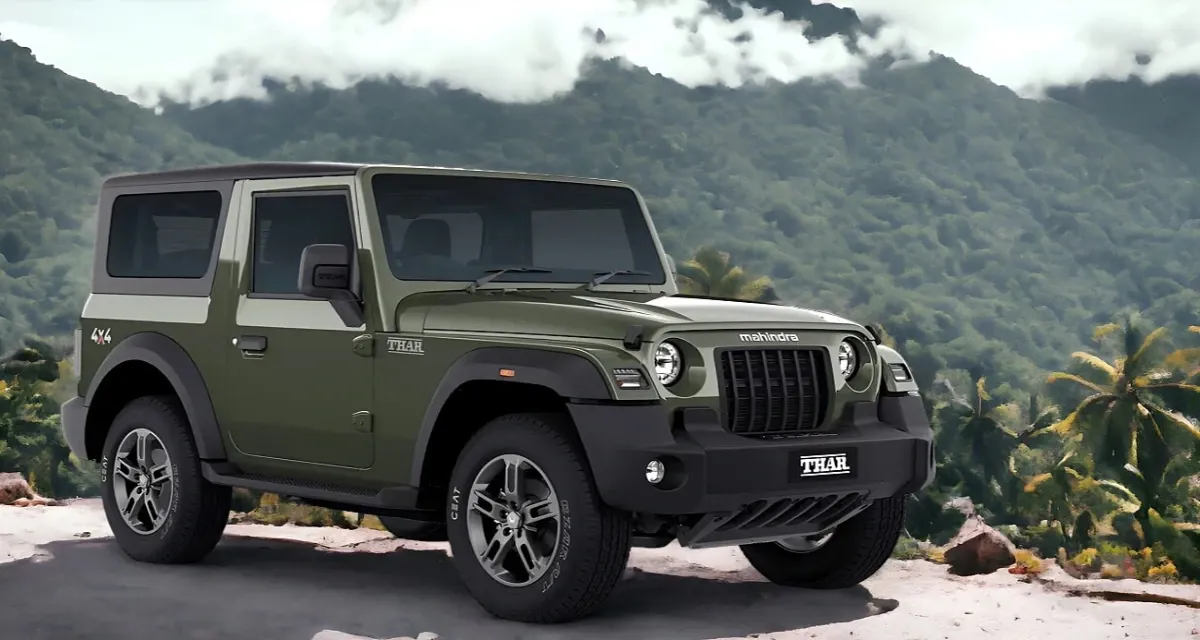

The new generation of the legendary Mahindra Thar SUV launched in India in 2020 and the vehicle looks engulfed with fresh design and enhanced capabilities. More than a year since its debut, the Thar continues to gain traction steadily and, according to the latest numbers, books over 75,000 vehicles. Hence, when the prospective buyer plans to go for a vehicle for the next festive season, the Mahindra Thar is one of the cheapest off-roader 4×4 options one can get in India. It is therefore important to compare the advantages and drawbacks of this durably built SUV before making a purchase.
The Mahindra Thar boasts a striking design that commands attention on the road. Its tall, muscular stance, accentuated by robust tyres, embodies the essence of a true SUV.
Safety is a strong suit for the Thar, validated by its impressive 4-star crash test rating from the Global NCAP, underscoring Mahindra's commitment to passenger security.
Inside, the cabin has received significant upgrades, including the introduction of a new 7.0-inch touchscreen infotainment system. This system integrates features like in-built navigation, Apple CarPlay, and Android Auto, enhancing the overall driving experience.
Under the hood, buyers have a choice between two potent engines: the 2.0-litre mStallion 150 TGDI petrol engine producing 150 bhp, and the 2.2-litre mHawk 130 diesel engine delivering 130 bhp. Both engines are paired with a 6-speed automatic gearbox, catering to diverse driving preferences.
When it comes to off-road prowess, the Thar excels with its mechanical 4x4 transfer case, offering modes for four-wheel low, four-wheel high, and two-wheel drive. A low crawl ratio of 42:1 enhances torque delivery, while the independent front suspension and multi-link rear suspension ensure exceptional off-road capability.
On-road comfort is where the Mahindra Thar faces criticism. Its stiff suspension setup translates to a bumpy ride quality, which may not suit all passengers during city or highway driving.
The 2-door configuration with a 4-seat layout poses practical challenges, particularly when accessing the rear seats. This limitation might be addressed if Mahindra introduces a 5-door variant in the future.
Space in the rear seats is limited, compromising passenger comfort and practicality, especially when carrying a full complement of four occupants with little room for luggage.
Certain modern conveniences are notably absent, even in the top-spec variant of the Thar. Features like a reverse camera, auto-dimming IRVM (Internal Rear View Mirror), auto headlamps & wipers, and electrically-folding ORVMs (Outside Rear View Mirrors) are missing, which could be expected in a vehicle of this caliber.
The Mahindra Thar emerges as a compelling choice for enthusiasts seeking a capable off-roader with robust design and safety credentials. While it excels in adventurous terrain and offers advanced infotainment, potential buyers should consider its on-road ride quality and practical limitations in seating and storage. With continuous updates and potential improvements on the horizon, Mahindra's Thar remains a strong contender in India's competitive SUV market.
In conclusion, understanding the nuances of the Mahindra Thar's strengths and weaknesses will empower buyers to make an informed decision aligned with their preferences and lifestyle. As Mahindra continues to refine its offerings, the Thar promises to uphold its legacy as an iconic and versatile SUV choice for Indian consumers.
Also Read: